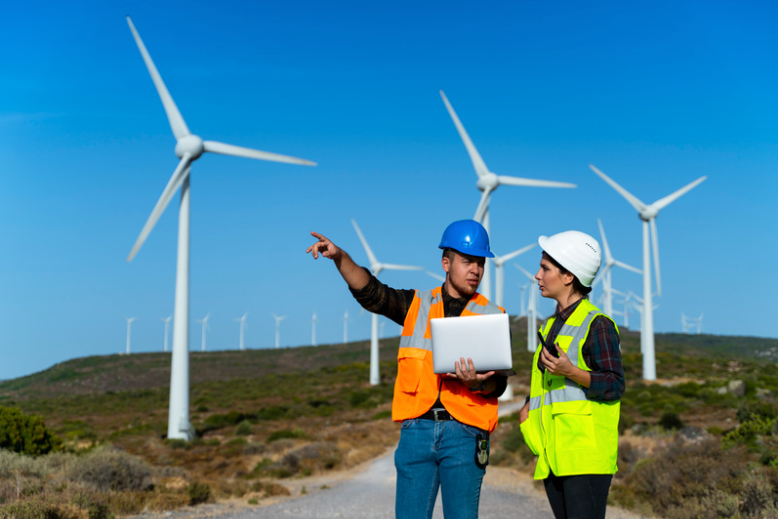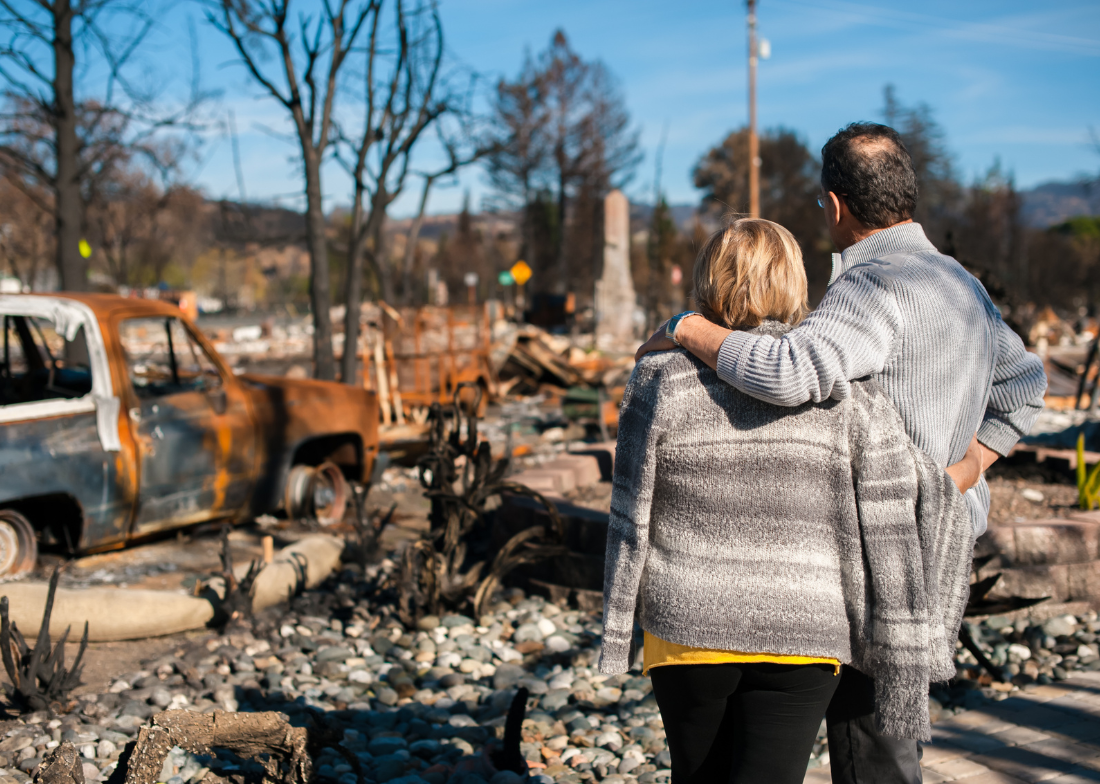7 Myths About Windmills Debunked
ACE Staff Writer
|October 9, 2024

Windmills, or wind turbines, have been a hot topic of discussion, especially as renewable energy sources gain traction. However, there are many myths and misconceptions about them that have spread through our society—but there are some that are more common than others. Let’s take a look at 7 myths about windmills and debunk them with facts.

Windmill Myth 1: They’re Noisy And Harmful To Health
A widespread myth is that wind turbines generate excessive noise, leading to health issues like headaches or sleep disturbances. However, modern wind turbines are designed to operate quietly. At a distance of 300 meters, the noise level from a wind turbine is comparable to the hum of a refrigerator, as noted by the World Health Organization (WHO). The low level of sound generated is typically drowned out by ambient noise, making it hardly noticeable in most environments.
Also, there is no scientific evidence linking wind turbine noise to adverse health effects. Extensive studies have been conducted, and organizations like the WHO have found no reliable data that supports claims of turbines causing health problems such as sleep disorders or chronic headaches.
Windmill Myth 2: They’re Inefficient And Expensive To Maintain
Wind energy is often criticized as being inefficient and expensive to maintain, but these claims are outdated. In fact, wind energy has become one of the most cost-effective forms of renewable energy. According to the U.S. Energy Information Administration, wind power boasts some of the lowest costs to produce energy across it’s lifespan and is competitive with traditional energy sources. Technological advancements have also driven down maintenance costs over the years, making wind farms more economically viable.
In addition to cost reductions, improvements in turbine design have increased the efficiency of wind power generation. Modern turbines are designed to capture more energy at lower wind speeds, boosting output and reliability. As the wind energy sector continues to evolve, it proves to be both a financially and environmentally sound energy source.
Windmill Myth 3: They’re Bad For Wildlife
A persistent myth is that wind turbines kill large numbers of birds and bats, but the actual impact is much smaller than many fear. While some wildlife can be affected, studies from the U.S. Fish and Wildlife Service show that fossil fuel plants pose a much greater threat to birds and other species. On a comparative scale, wind energy has far less impact on wildlife than conventional energy sources, such as coal and gas plants.
Moreover, the wind industry is actively working to minimize its impact on wildlife. Many wind farms implement mitigation measures, such as adjusting turbine speeds during migration seasons and utilizing technology to detect and protect wildlife. These efforts continue to improve as more research and innovation help balance renewable energy production with wildlife protection.
Windmill Myth 4: They Don’t Work Without Wind
It’s a common assumption that wind turbines are useless in calm weather, but modern wind farms are strategically placed in locations with consistent wind patterns. This ensures that they are able to capture wind energy most of the time. Even in less windy conditions, turbines can continue to operate at lower capacities, still contributing to the overall energy mix.
Additionally, grid operators play a crucial role in managing the supply of wind power. They balance wind energy with other sources, ensuring a reliable electricity supply even during times of low wind. This flexibility allows wind energy to remain a significant and dependable part of the grid, even when the wind isn’t blowing at full strength.

Windmill Myth 5: They Lower Property Values
A common misconception is that having a windmill near your home will reduce property values. However, multiple studies, including one from Lawrence Berkeley National Laboratory, show no significant impact on home prices near wind farms. These studies suggest that proximity to wind turbines does not negatively affect home values, and in many cases, property values remain stable over time.
In fact, communities often benefit economically from wind farms. The installation of turbines brings jobs, infrastructure improvements, and investments that can boost local economies. As wind energy projects expand, many regions see positive growth in terms of both local employment and community development.
Windmill Myth 6: They Require Hazardous Oil Disposal
A common misconception is that wind turbines require large amounts of oil for maintenance, leading to hazardous waste disposal. While wind turbines do use oil for lubrication, the amount is significantly less than what is required for other industrial machines. In fact, most turbines need only a few hundred liters of oil, and that oil can last for several years before needing replacement.
Moreover, strict environmental regulations govern how turbine operators manage the disposal of used oil. Companies follow protocols to ensure oil is handled and disposed of safely, minimizing environmental risks. This careful management helps prevent any negative impacts associated with oil waste.
Windmill Myth 7: They’re Hard To Get Rid Of
A common misconception is that wind turbines, particularly their blades, are difficult to recycle and contribute significant waste at the end of their lifecycle. While it’s true that the composite materials used in turbine blades can be challenging to recycle, the wind industry is making great strides in blade recycling technologies. Companies are increasingly finding ways to repurpose old blades into materials for construction, such as cement or bridge components, reducing waste and giving the materials a second life.
In addition to blade recycling, over 85% of a wind turbine’s components—such as steel, copper, and concrete—are fully recyclable. This includes key parts of the turbine like the tower and the other key operations components. As the renewable energy industry continues to innovate, we are seeing more sustainable solutions for the disposal of wind turbines, further aligning with global environmental goals.
Windmills are an essential part of the transition to renewable energy, and debunking these myths helps pave the way for a cleaner future. With the right knowledge, we can understand that wind energy is not only economical and sustainable, but also plays a crucial part in mitigating climate change. By debunking these myths about windmills, we hope to clear up misconceptions and highlight the true potential of wind energy as a reliable and sustainable power source.
Join our Youth Action Network
More Blog Posts
Driving India towards self sufficiency and freedom from oil
India can shield itself from oil-price shocks and global pressure over Russian barrels by leaning harder into two strengths it …
Read More
Unnatural, Not Unprecedented
For two weeks, residents of Southern California endured a waking nightmare. Parents raced against time – hurrying down the driveway …
Read MoreCrafting a Vision for the Future: My Experience at LCOY USA 2024
Dry and sunny Tempe, Arizona where temperatures have been over 100 F for 113 consecutive days, delegates gathered to attend …
Read More